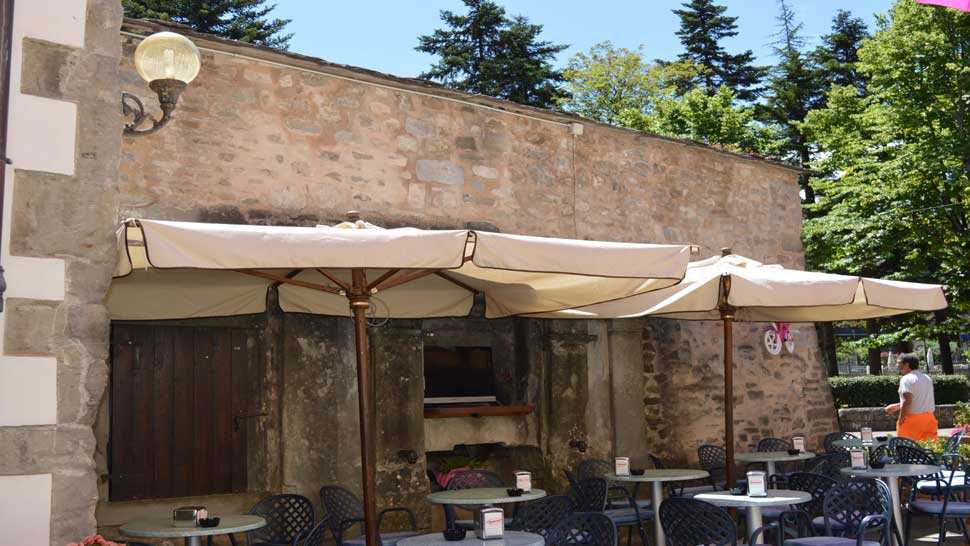| Title | Modified Date |
|---|---|
| Scopri il territorio | 14/03/17 |
| Ospitalita | 10/02/17 |
| Musei Gallerie | 22/03/17 |
| Header_footer | 01/02/17 |
| Dove Dormire | 14/03/17 |
| Borghi | 22/03/17 |
| Arte e Cultura | 14/03/17 |
| Alberghi tre stelle | 16/01/17 |
| Alberghi Quattro e Cinque Stelle | 10/02/17 |
| Alberghi 4 stelle | 16/01/17 |
| Alberghi 2 stelle | 18/01/17 |
| Alberghi 1 stella | 18/01/17 |
| Agriturismo | 18/01/17 |
| Abbazie Monasteri Santuari | 14/03/17 |
| bdr_2016 | 17/10/16 |
| test | 06/12/16 |
| smc-content | 15/12/16 |
Remains of the Porta Fiorentina

Remains of the Porta Fiorentina in Bagno di Romagna
Bagno di Romagna in the fourteenth century was a small but populous "castrum" surrounded by walls along which two towers stood and two doors opened: this is how some documents tell us, in particular the "Descriptio Romandiole" (1371) of Cardinal Anglic de Grimoard; and so it is depicted in a "view" of 1788 painted by Antonio Fedi. During the nineteenth century long sections of the walls were demolished "to give air" to the town, others incorporated into some buildings. The "Porta di Romagna", also called "Arco Biozzi", was demolished in 1888; the same fate fell to the "Porta Fiorentina" in 1870, and with the sandstone ashlars obtained, an elegant frame was built on the side walls to an old well with a fountain. A metal wheel, still visible, was used to make the water flow from the well to the two "mouths" of the fountain.
ON FOOT: the remains of the Porta Fiorentina are placed at the junction of Via Fiorentina with Piazza Dante.











 Facebook
Facebook Instagram
Instagram Youtube
Youtube